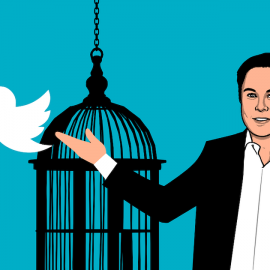

This article is an excerpt from the Shortform book guide to "Secrets of Closing the Sale" by Zig Ziglar. Shortform has the world's best summaries and analyses of books you should be reading.
Like this article? Sign up for a free trial here .
Do your customers bring up objections? Do you need to know how to handle objections in sales?
In his book Secrets of Closing the Sale, salesman and author Zig Ziglar goes over three techniques to address customer objections. These techniques include addressing objections immediately, appealing to logic and emotion, and staying calm.
Below, we’ll go over the three techniques on how to handle objections in sales.
How to Address Objections Effectively
Your customer will likely bring up objections, writes Ziglar. This is good because it means the customer is seriously considering the purchase. Nonetheless, you must address all objections effectively to make the sale.
(Shortform note: In Sell or Be Sold, Grant Cardone proposes that perhaps you don’t need to address all objections yourself: Allow the customer to address their objections by asking them what they would do about the problem they’re raising. If they propose a viable solution, then you’ll have even greater certainty that the customer is serious about buying.)
If you want to know how to handle objections in sales, use these three techniques:
Technique #1: Elicit And Address All Objections Immediately
Elicit the lead’s objections before they bring them up themselves so you can address them immediately, suggests Ziglar. Do this by asking targeted questions; for example, “Do you have any concerns about the durability of this smartwatch?” If the lead voices a concern, address it head-on.
(Shortform note: One of the most effective and trust-building ways to address objections is to acknowledge your or your product’s flaws when applicable, writes Mark Manson. Doing so makes companies more likable and turns their imperfections into assets. For instance, you might acknowledge to a customer that your company’s not great with customer service but that you’re working hard to improve and that their feedback on it is valued. This greatly increases customer trust and may be enough to overcome an objection.)
If the lead flat-out says no to the purchase, straightforwardly ask why they’re not interested and then address those objections, advises Ziglar.
(Shortform note: While Ziglar recommends persisting in eliciting objections even once the lead has given a firm “no,” sometimes, a “no” really means the lead isn’t going to buy. If there’s an opportunity cost to persisting with a difficult sale (for instance, if you have other prospects you could be visiting), consider terminating the pitch and moving on.)
Technique #2: Address Objections One at a Time, Appealing to Logic and Emotion
When handling objections in sales, do so one at a time, while always appealing to the customer’s logic and emotions, advises Ziglar. Addressing objections one at a time keeps you in control and maintains the clarity of your pitch. Also, structure your responses to objections so you first logically and then emotionally invalidate them.
For instance, if your customer is worried about using their smartwatch for swimming, first assure them that the watch is designed to be water-resistant up to 20 meters (logic), and then assure them that if something does go wrong with the watch while swimming, they’ll get a free replacement (emotion).
Technique #3: Stay Calm When Objections Are Unfair
If the lead raises an objection you feel is nonsensical or even malicious, maintain your positive attitude by responding courteously and thoughtfully, insists Ziglar. You can do this by agreeing with the customer on their objection before addressing it.
(Shortform note: In Sell Or Be Sold, Grant Cardone presents another reason why maintaining a positive attitude in the face of objections is important: If the lead buys, you can sell your continued kind and patient service as a feature of the product. If the lead is impressed with your calm and courteous demeanor, they may be willing to pay extra to secure your help.)
Alternative Advice on Handling Objections in Sales
Jordan Belfort also recommends addressing objections one at a time, but he recommends first deflecting the objections by repeating your script to outline the more general value of your product—essentially, he advises that you re-present the emotional and logical case for your product. He calls this process “looping,” because it’s a process wherein to address an objection, you loop back to your presentation. If the customer again objects, then Belford advises that you address the content of the objection specifically.
The difference between this approach and Ziglar’s is that while Belford suggests “deflecting” the customer’s concern and returning to the script, Ziglar advises immediately addressing the specific content of each objection the first time a customer raises it.

———End of Preview———
Like what you just read? Read the rest of the world's best book summary and analysis of Zig Ziglar's "Secrets of Closing the Sale" at Shortform .
Here's what you'll find in our full Secrets of Closing the Sale summary :
- What qualities you must develop as a salesperson
- The six common customer behaviors you must understand
- Five rules for crafting an effective sales pitch






